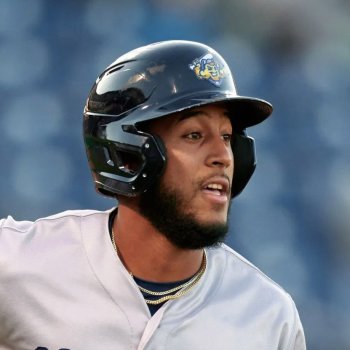
Twins Video
When watching a game last year and seeing Carlos Correa make throws, it was hard not to be impressed at the sheer velocity he put behind the baseball. Sometimes it is noticeable as to how quick a guy transitions the ball from glove to hand, while others look as though a rocket exploded from their fist. Correa definitely seemed to be more of the latter, but there is still room for growth.
Recently Statcast began measuring arm strength across the league as a whole. Correa is well behind leading shortstop O’Neill Cruz, and checks in 9th, behind division rival Javier Baez. His 88.1 mph average is certainly impressive, but likely seems even greater after watching the likes of Jorge Polanco and Nick Gordon field the position.
Beyond arm strength, Correa has always been seen as a solid defender. Maybe not to the level previous Minnesota infielder Andrelton Simmons was believed to be in his prime, but Correa is no slouch. The winner of both a Gold and Platinum Glove, Correa has previously been recognized with personal accolades.
Analytically, 2022 was not a great year however. In more than 1,100 innings Correa posted just three defensive runs saved for Minnesota. That represents the lowest tally of his career and is a far cry from the 20 DRS he put up a year prior. Statcast mimicked that sentiment as Correa graded out with a -3 outs above average tally, and a -2 runs above average total in 2022. Defensive metrics are often difficult to quantify even on a year-over-year sample, but get increasingly more difficult in small samples.
Looking to further assess the deficiencies faced from Correa last year, it makes sense to understand where Statcast graded him on a directional basis. Charging the ball, Correa was among the best in the game. Getting strong jumps and being able to throw across the diamond on the move is a definite asset for him. Where things went wrong was in having to cover towards second base.
Infield alignment will be an interesting factor in looking at success rates in 2023 and beyond. The shift being banned now limits the positioning of fielders. Correa was learning how to play alongside Polanco for the first time last season, and Minnesota already was aware that their failed shortstop had limitations defensive. When putting Luis Arraez at second base, things take an even further step backwards. Correa needing to control the hole and get to balls behind second base stretches him relatively thin.
It’s certainly not as though Correa hasn’t performed at a high level in the field before, and there is no reason to think he can’t again. At his introductory press conference last spring Correa talked about acclimating with Polanco. He had played alongside Jose Altuve for years, and understood what Alex Bregman brought on the other side. Even if Minnesota began working through things as a unit last year, there is still a substantial growing process.
This season Rocco Baldelli will likely have Jose Miranda at the hot corner significantly more often, and Correa will continue to gel with Polanco. As the three adapt to rule changes that will change their positioning, chemistry between the group will also continue to develop on and off the field. Minnesota was 12th in baseball by defensive runs saved last year, but virtually all of that production came from the outfield. If they can be better on the dirt, there are plenty more games for them to win.
Now entrenched as their starting shortstop for the better part of the next decade, this is Correa’s infield to quarterback. He has the leadership abilities to make that work, but we have also seen the talent that can help raise the water level for everyone else as well.
MORE FROM TWINS DAILY
— Latest Twins coverage from our writers
— Recent Twins discussion in our forums
— Follow Twins Daily via Twitter, Facebook or email
— Become a Twins Daily Caretaker









Recommended Comments
Join the conversation
You can post now and register later. If you have an account, sign in now to post with your account.
Note: Your post will require moderator approval before it will be visible.